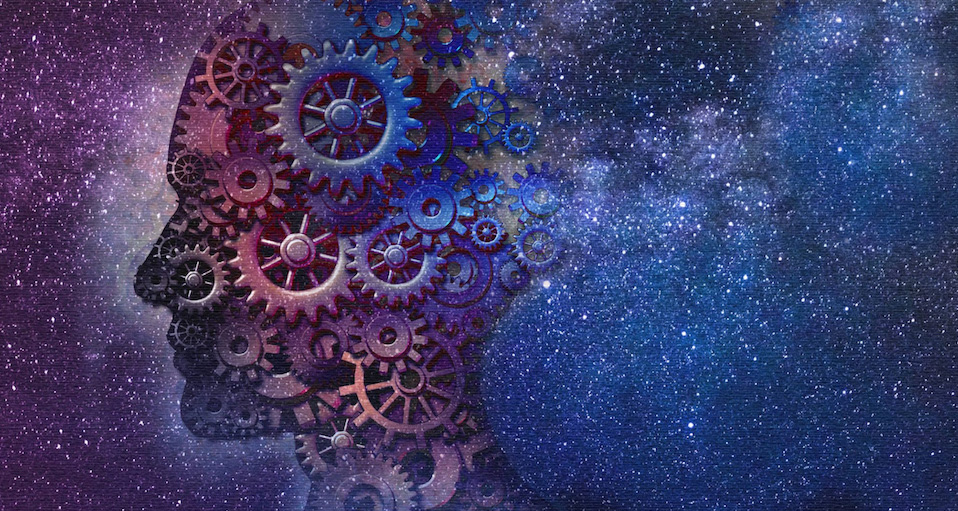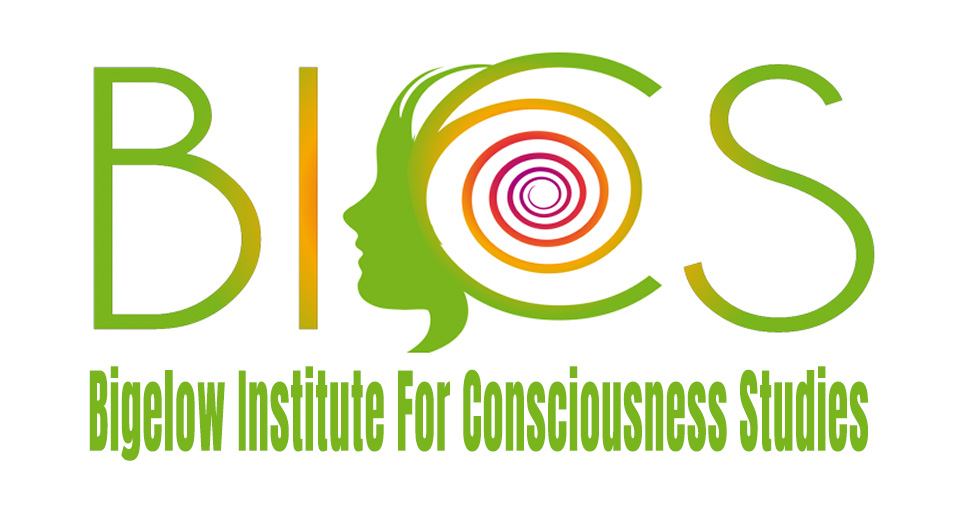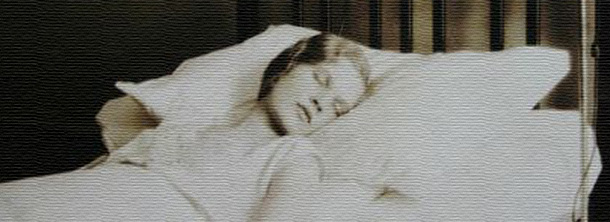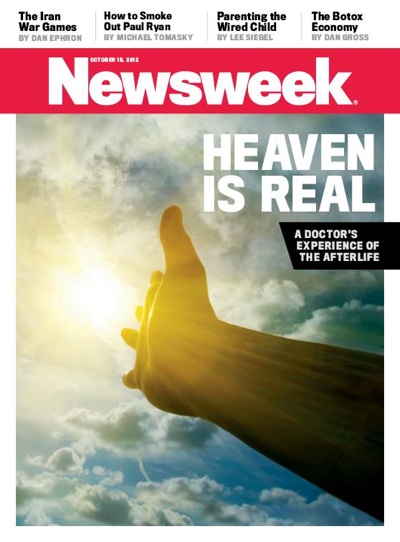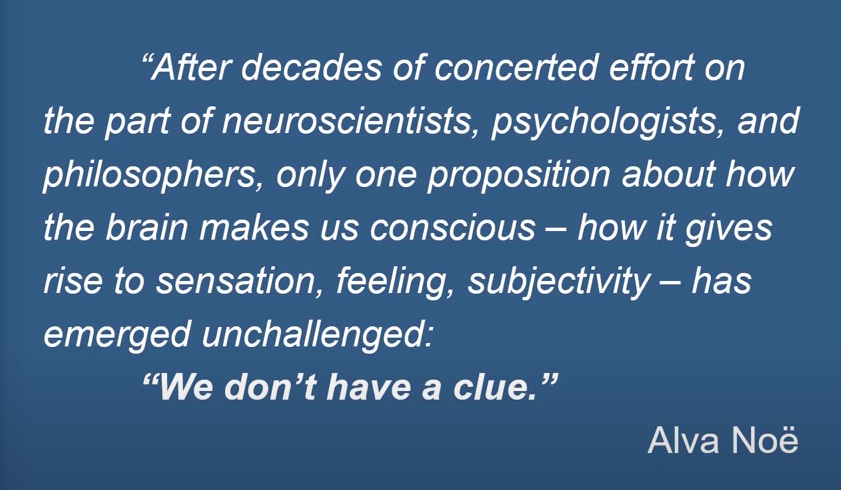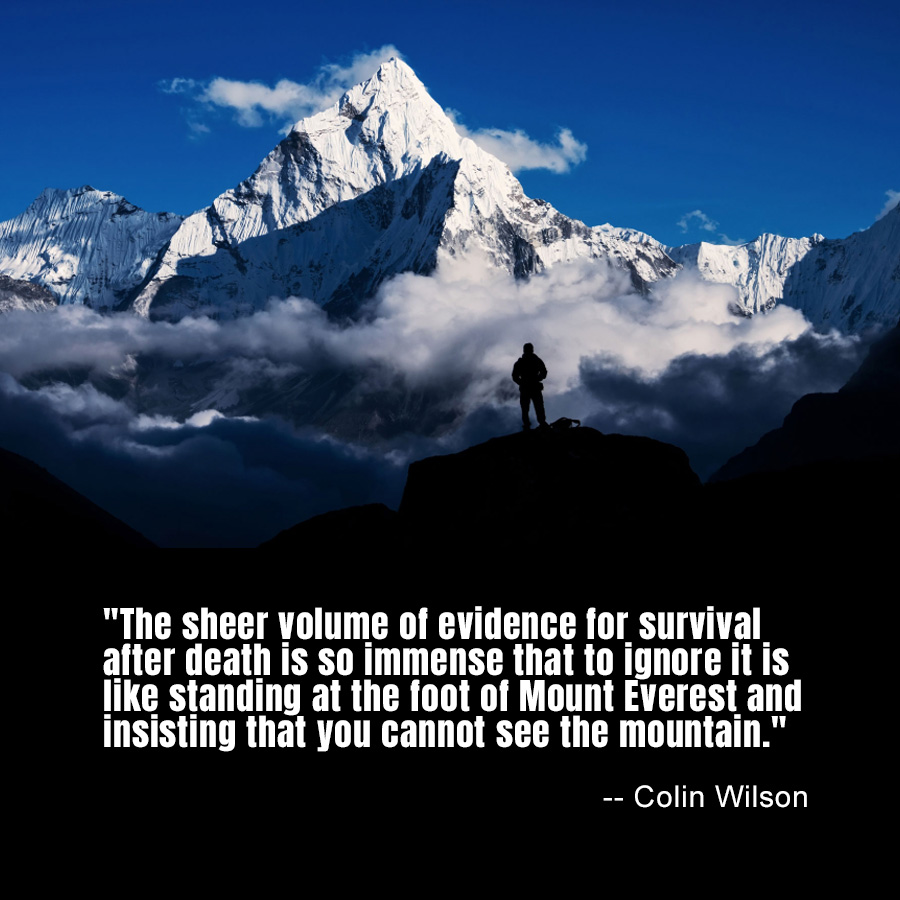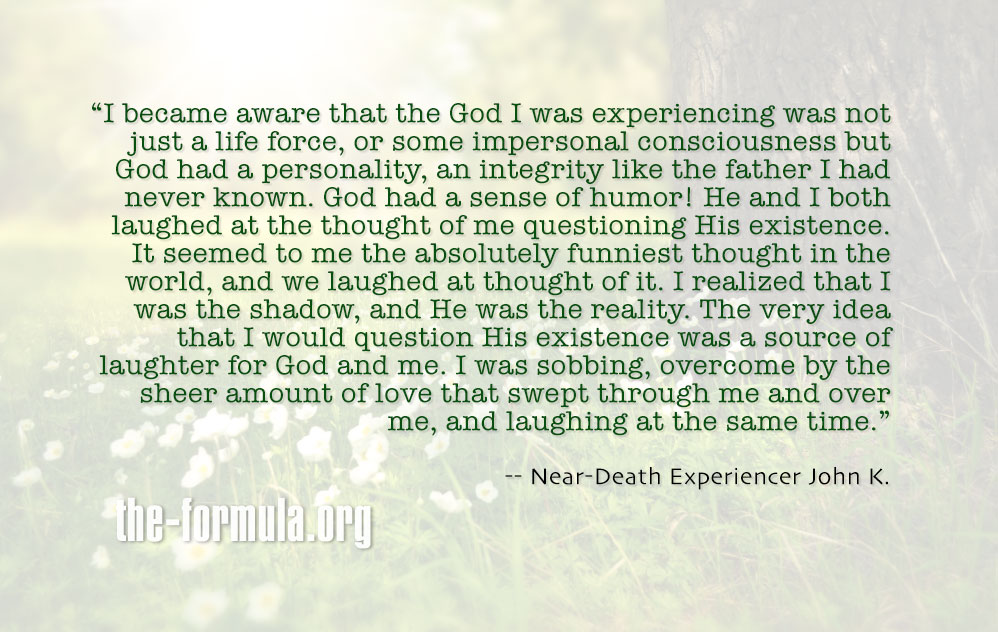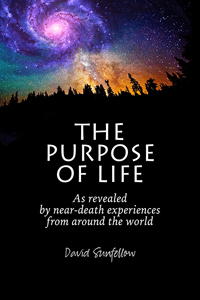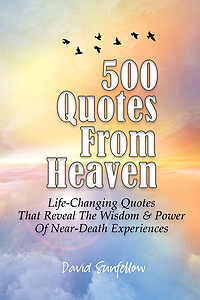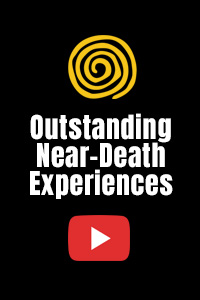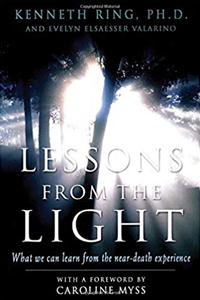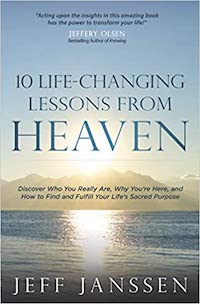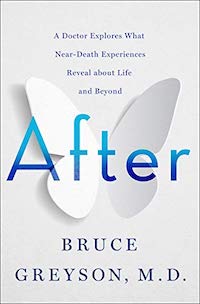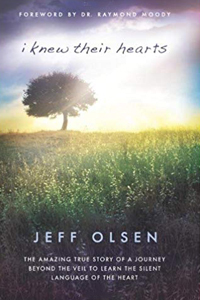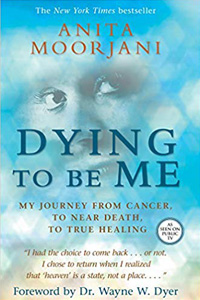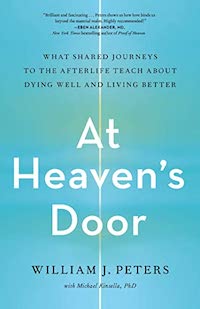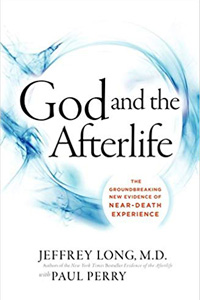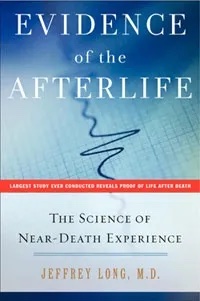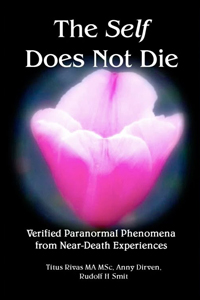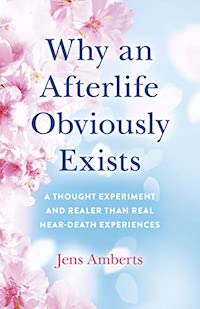………………..
While many skeptics continue to suggest that malfunctioning brains produce near-death experiences, the evidence is now overwhelming that this is not the case. Be sure to check out this related resource page: How To Deal With Skeptics & Atheists.
See Also: Kevin Williams: A Chat About Near-Death Experiences With An Artificial Intelligence Robot
………………..
“After decades of concerted effort on the part of neuroscientists, psychologists, and philosophers, only one proposition about how the brain makes us conscious — how it gives rise to sensation, feeling, subjectivity — has emerged unchallenged: We don’t have a clue!”
— Alva Noë, Professor of Philosophy at the University of California, Berkeley
…
“The most reasonable neuroscientific explanation of NDEs, the one that accounts best for all the data, is that NDEs are not a product of brain activity at all. They result, instead, from the removal of the brain’s filtering activity. Maybe for the first time in a person’s life, at the moment of death, the selecting and filtering effect of the brain is eliminated and the individual is free to experience a greater reality that involves more than just a physical environment. In fact, some NDErs spontaneously use the filter metaphor to describe feeling free from their brains during an NDE. One experiencer reported a shift in his consciousness when he drowned at age eight. He said: ‘My mind expanded to that of an adult capacity and then beyond. Without the limitations of a child’s brain, it allowed my true nature to begin to express itself again. It made me think that our understanding of the brain is actually backwards. The brain filters out everything and doesn’t help our thinking, but hinders it, slows it down, focuses it. Maybe, because it is so good at filtering and focusing, we don’t remember our prior existence…'”
— Near-Death Experience Researcher, Dr. Bruce Greyson, MD (Source: Why NDEs Matter, beginning at 00:38:06)
…
“The sheer volume of evidence for survival after death is so immense that to ignore it is like standing at the foot of Mount Everest and insisting that you cannot see the mountain.”
— Colin Wilson
…
“The first gulp from the glass of natural sciences will turn you into an atheist, but at the bottom of the glass God is waiting for you.”
— Werner Heisenberg (1901 – 1976), Nobel Prize in Physics 1932
…
“I saw a Divine Being. I’m afraid I’m going to have to revise all my various books and opinions.”
— Philosopher A.J. Ayer speaking to his doctor after having a near-death experience in 1988
………………..
Quick list of evidence that suggests near-death experiences (and other spiritually transformative experiences) are not produced by malfunctioning brains:
• While clinically dead, a person witnesses events, sometimes in distant locations, that are later confirmed to be true (verified paranormal phenomena)
• People present at a person’s death see and experience the spiritual realities of the dying person (shared death experiences)
• Groups of dying people share the same NDE
• People born blind can see during an NDE
• People with large portions of their brains missing can still be fully functional
• Terminal Lucidity
• Acquired Savant Syndromes
• People that have been clinically dead FOR DAYS return to life with stories of the other side
• Miraculous healings
• Accurate predictions of the future
• Encounters with unknown loved ones that are later verified to be true
• Deathbed visions
• NDE memories are more real and remembered more accurately than ordinary memories
• Atheists and materialists abandon materialistic world views when they personally encounter spiritual realities
• Out-of-body experiences support the reality of spiritual, otherworldly domains
• Shamanic and hallucinogenic experiences support the reality of spiritual, otherworldly domains
• Childhood past life memories
Additional Evidence Is Available Here
………………..
In 2021, the Bigelow Institute for Consciousness Studies (BICS) announced the results of a contest to collect the best evidence for survival of human consciousness after bodily death. All together, 204 essays were submitted. After careful consideration, 29 essays were selected as winners. This included first, second, and third place winners, along with 11 runners up, and 15 honorable mentions. The three top essays are linked below. To see all the winners, read their essays, and learn more about the contest, go here.
1st Prize – Jeffrey Mishlove PhD – $500,000 (Essay)
2nd Prize – Pim van Lommel MD – $300,000 (Essay)
3rd Prize – Leo Ruickbie PhD – $150,000 (Essay)
All 29 Winning BICS Consciousness Survives Essays
………………..
Near-Death Experiences: Dealing With Skepticism (IANDS Panel Discussion)
………………..
The Self Does Not Die: Verified Paranormal Phenomena from Near-Death Experiences
By Titus Rivas, Anny Dirven, Rudolf H. Smit, Robert G. Mays, Janice Miner Holden
Are near-death experiences (NDEs) just elaborate hallucinations produced by a dying brain? Or the exuberant fantasies of attention-seeking narcissists? As the accounts in this book abundantly demonstrate: Neither!
 This book contains over 100 reliable, often firsthand accounts of perceptions during NDEs that were later verified as accurate by independent sources. These near-death experiencers were everyday people from all over the world — many of whom were clinically dead, unable to see or hear, and yet able to perceive new vistas of a world beyond the senses and even beyond death.
This book contains over 100 reliable, often firsthand accounts of perceptions during NDEs that were later verified as accurate by independent sources. These near-death experiencers were everyday people from all over the world — many of whom were clinically dead, unable to see or hear, and yet able to perceive new vistas of a world beyond the senses and even beyond death.
The Self Does Not Die is a trailblazing effort to present the most confirmed cases of consciousness beyond death ever compiled. In these cases, the authors have gone back to the original sources, the people involved in each case, whenever possible, rather than relying on secondhand sources. In so doing, they have assembled a unique collection of empirical data that any scholar worthy of the name must take into account.
By carefully studying and describing many convincing and corroborated cases, during cardiac arrest and other cases, the authors conclude that there are good reasons to assume that our consciousness does not always coincide with the functioning of our brain: Enhanced consciousness can sometimes be experienced separately from the body.
This book is a must read for anyone wanting to know more about this fascinating subject with its implications about the very nature of human consciousness and its survival of physical death. It has the potential to radically change the currently still widely accepted materialist paradigm in science.
…
Are Near-Death Experiences Just Comforting Illusions? Verified Perception During NDEs Suggests They Have Some Basis In Reality.
Psychology Today
August 8, 2019
Excerpt:
It has been verified that some NDErs have correctly perceived physical events that they could not have normally seen or heard even if their brains and bodies had been fully functional. A number of such cases have been investigated by various researchers and collected by Titus Rivas, Anny Dirven, and Rudolf H. Smit in their 2016 book The Self Does Not Die.
 For instance, in a case reported on by hospice physician John Lerma, an 82-year-old man had an NDE in which he floated out of his body in the hospital trauma room. From a position up above the goings-on there, he saw a quarter sitting on the right-hand corner of the eight-foot-high cardiac monitor, a quarter dating from the year 1985. After he was resuscitated, he asked Lerma to go and check whether the quarter was really there, so he could know whether his very affecting spiritual experience was real. Lerma took a ladder and climbed up to look, and there indeed was the 1985 quarter, just as the patient had seen it.
For instance, in a case reported on by hospice physician John Lerma, an 82-year-old man had an NDE in which he floated out of his body in the hospital trauma room. From a position up above the goings-on there, he saw a quarter sitting on the right-hand corner of the eight-foot-high cardiac monitor, a quarter dating from the year 1985. After he was resuscitated, he asked Lerma to go and check whether the quarter was really there, so he could know whether his very affecting spiritual experience was real. Lerma took a ladder and climbed up to look, and there indeed was the 1985 quarter, just as the patient had seen it.
In another case, this one originally recorded by Kenneth Ring and Madelaine Lawrence (1993), a patient described having an NDE in which she was pulled upward through the floors of the hospital until she came up out of the roof. From there, she noticed a red shoe lying on the roof. A skeptical physician later went onto the roof to check and indeed discovered the red shoe she’d described.
Other NDErs have received verification for their perceptions of distant events as diverse as their grandmothers both suddenly taking up smoking, their wife and daughter discussing taking cuttings from a unique tree in a hospital courtyard, and a leg amputation in a nearby operating theater, which the NDEr described in some detail.
In other cases, it has been verified that an NDEr accurately perceived an event that occurred precisely during the period when the NDEr’s heart was stopped and normal brain function had ceased. In fact, Rivas, Dirven, and Smit devote an entire chapter of their book to verified cases of awareness and perception during cardiac arrest.
One example is the case of a man who saw his dentures being removed and put on a tray on the crash cart. While this event did not happen at any great distance from his body, it occurred while the patient was “ashen gray, with livor mortis (in which blue-black discoloration occurs where blood pools in the lowest areas of the corpse) and blue lips and nails. He exhibited no blood circulation…[and] had no heart rhythm”.
As Rivas, Dirven, and Smit make clear, “[d]uring cardiac arrest, the brain activity of the cortex is shut down within an average of about 15 seconds to such an extent that, according to materialists, no complex conscious experiencing can occur after this point”. By the time the man who saw his dentures removed was brought into the hospital, he had been in cardiac arrest for a great deal longer than 15 seconds. He had been found “unconscious, stone cold, and apparently clinically dead out in a meadow…. In the ambulance, they tried to resuscitate him, but failed…”.
This explains the man’s blue appearance when he arrived at the hospital, where his dentures were removed before the renewal of resuscitation efforts. Those resuscitation efforts then took over an hour to be effective enough for the patient to be transmitted to the ICU. And yet, about a week later, the patient spoke to the nurse who had removed his dentures and said that he had seen the nurse place them on the pull-out shelf of a cart with lots of bottles on it, which is exactly what the nurse had done…
…
Analysis Of ‘The Self Does Not Die: Verified Paranormal Phenomena In NDEs’
………………..
Evidence-Based Near-Death Experience Accounts: Stephanie Arnold & Tricia Barker
………………..
Four-Year International Study Indicates Consciousness Survives Brain Shutdown
Survival of consciousness after brain shutdown has now been proven by a four-year international study of 2,060 cardiac arrest cases across 15 hospitals around the world. Read the scholarly peer-reviewed paper published in The Journal Resuscitation. Download a pdf version of the study here.
Key Points:
• This is largest ever medical study into near-death and out-of-body experiences
• The 2,060 cardiac arrest cases that were studied come from hospitals in the Great Britain, theUnited States, and Australia
• Of the 2,060 cardiac arrest patients studied, 330 survived and 140 (or 40 percent) said they had experienced some kind of awareness during the time when they were clinically dead before their hearts were restarted
• One man even recalled leaving his body entirely and watching his resuscitation from the corner of the room
• Although many could not recall specific details, some themes emerged: One in five said they had felt an unusual sense of peacefulness; nearly one third said time had slowed down or speeded up; some recalled seeing a bright light, golden flash or the sun shining; others recounted feelings of fear or drowning or being dragged through deep water; 13 per cent said they had felt separated from their bodies and the same number said their sensed had been heightened.
• To test whether or not patients actually left their bodies, each hospital installed between 50 and 100 shelves in areas where cardiac arrest resuscitation was deemed likely to occur. Each shelf contained one image which was only visible from above the shelf. Each image was different and included a combination of nationalistic and religious symbols, people, animals, and major newspaper headlines. Despite the installation of approximately 1,000 shelves across the participating hospitals, only 22% of the cardiac arrest events actually took place in the critical and acute medical wards where the shelves had been installed. Consequently over 78% of cardiac arrest events took place in rooms without a shelf. The report does not indicate if any patients saw these images.
For more information about this important study, go here.
………………..
Why An Afterlife Obviously Exists: A Thought Experiment And Realer Than Real Near-Death Experiences
By Jens Amberts
Amazon Description:
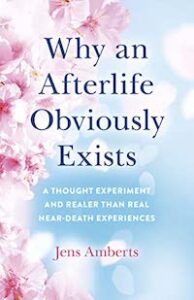 Why An Afterlife Obviously Exists is a philosophical argument demonstrating why the existence of an afterlife is beyond astronomically likely and hence empirically certain. It explains how we have every rational reason to think that people who have near-death experiences are not only telling the truth, but the book also argues that near-death experiencers are thoroughly justified in knowing that they visited the actual afterlife.
Why An Afterlife Obviously Exists is a philosophical argument demonstrating why the existence of an afterlife is beyond astronomically likely and hence empirically certain. It explains how we have every rational reason to think that people who have near-death experiences are not only telling the truth, but the book also argues that near-death experiencers are thoroughly justified in knowing that they visited the actual afterlife.
“Like a master attorney, Jens Amberts has marshaled an abundance of virtually irrefutable evidence in making the case for the thesis of his brilliant book, Why An Afterlife Obviously Exists. Basing his argument on four fundamental facts about near-death experiences (NDEs), Amberts has written a book that every serious student of NDEs, and especially skeptics, should be sure to read. On finishing it, I doubt any reader will not be convinced that death is not a dead end.”
— Kenneth Ring, Ph.D., Professor Emeritus of Psychology, University of Connecticut, author of Lessons From The Light
“Jens Amberts has written a book unlike any other. Why An Afterlife Obviously Exists argues that the testimony of near-death experiencers establishes beyond any reasonable doubt that we do survive bodily death. Furthermore, it presents an impressive logical case for why all of us should take that testimony seriously. Written in a conversational style that is easily accessible by anyone, this book is one that deserves to be read, re-read, and read again. Amberts presents arguments that you will keep pondering long after you have finished reading his book.”
— Bruce Greyson, M.D., Professor Emeritus of Psychiatry & Neurobehavioral Sciences, University of Virginia, author of After: A Doctor Explores What Near-Death Experiences Reveal About Life And Beyond
“Through a carefully crafted philosophical argument, Amberts documents the empirical and rational basis for his own transformation from a philosophical materialist–believing that the material world is the only reality — to a survivalist — convinced that another reality exists, one in which human consciousness continues after physical death. This book is a must-read for any truly open-minded empiricist interested in the question of the most accurate view of the cosmos.”
— Janice Miner Holden, Ed.D., editor-in-chief of Journal of Near-Death Studies, co-author of The Handbook Of Near-Death Experiences: Thirty Years of Investigation
See Also:
• Does An Afterlife Obviously Exist? Philosopher Jens Amberts Argues That Life After Death Is “Empirically Certain” (Psychology Today – 04/29/22) – (Download a PDF copy of this article)
• Why An Afterlife Obviously Exists (Life After Life – 05/04/22) – (Download a PDF copy of this article)
………………..
Science and Postmortem Survival
Talk by Dr. Bruce Greyson
Society for Scientific Exploration
May 12, 2010
Bruce Greyson, M.D., is the Chester F. Carlson Professor of Psychiatry & Neurobehavioral Sciences and Director of the Division of Perceptual Studies at the University of Virginia. Dr. Greyson graduated from Cornell University with a major in psychology, received his medical degree from the State University of New York Upstate Medical College, and completed his psychiatric residency at the University of Virginia. He has spent the last three decades investigating near-death experiences. In this sweeping talk, Dr. Greyson discusses what science has learned from three different lines of investigation into postmortem survival. For the purposes of this resource page, the video below includes Dr. Greyson commenting on a Cambridge college student who was missing most (if not all) of his cerebral cortex. The cerebral cortex, of course, plays a key role in memory, attention, perceptual awareness, thought, language, and consciousness. This extraordinary case is referenced between 4:18 and 5:02 in the video below. To watch Dr. Greyson’s complete talk, go here.
Dr. Bruce Greyson: A Cambridge College Student Who Was Missing Most Of His Cerebral Cortex
See also:
……………..
Professor Keith Kendrick: The Man With No Brain!
……………..
Dr. Bruce Greyson: Are Near-Death Experiences Real? Here’s What Science Has To Say.
Learn More About Dr. Bruce Greyson • Read Greyson’s New Book “After”
………………..
Dr. Bruce Greyson: Is Consciousness Produced by the Brain?
Dr. Bruce Greyson, Professor of Psychiatry at the University of Virginia, speaking at the “Cosmology and Consciousness Conference – Mind and Matter” in India in 2011.
………………..
Dr. Bruce Greyson: Expanding Science By Expanding The Consciousness Of Scientists
………………..
Glimpses of Eternity
By Raymond Moody
Book Description:
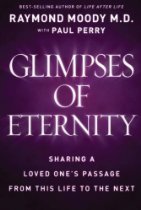 Raymond Moody, author of the multimillion copy best-seller, Life After Life, reveals new results from his lifelong investigation of what happens when we die. Raymond Moody revolutionized the way we think about death with his first book, Life After Life, which was stories of people who died and then returned to life. Going through a tunnel, encountering an angelic being or having an out-of-body experience are hallmarks of what Moody termed a ‘near-death experience.’ Since the publication of his multimillion copy best-seller, hundreds of thousands of people have contacted Moody to share their own experiences. The startling pattern that Moody discovered is that at the time of death, loved ones also have inexplicable experiences. Glimpses of Eternity is the first book to talk about the phenomenon of ‘shared death experiences.’ Readers will discover deathbed moments when entire families see the light or the room changes shape. Others tell of seeing a film like review of a loved one’s life and learning things that they could never have known otherwise. The stories are at once a comfort and a mystery, giving us a new understanding of the journey that we will take at the end of our lives.
Raymond Moody, author of the multimillion copy best-seller, Life After Life, reveals new results from his lifelong investigation of what happens when we die. Raymond Moody revolutionized the way we think about death with his first book, Life After Life, which was stories of people who died and then returned to life. Going through a tunnel, encountering an angelic being or having an out-of-body experience are hallmarks of what Moody termed a ‘near-death experience.’ Since the publication of his multimillion copy best-seller, hundreds of thousands of people have contacted Moody to share their own experiences. The startling pattern that Moody discovered is that at the time of death, loved ones also have inexplicable experiences. Glimpses of Eternity is the first book to talk about the phenomenon of ‘shared death experiences.’ Readers will discover deathbed moments when entire families see the light or the room changes shape. Others tell of seeing a film like review of a loved one’s life and learning things that they could never have known otherwise. The stories are at once a comfort and a mystery, giving us a new understanding of the journey that we will take at the end of our lives.
………………..
Dr. Raymond Moody And Paul Perry Discuss Shared Death Experiences
………………..
Paul Perry Interviews Dr. Raymond Moody About Shared Death Experiences
………………..
Dr. Raymond Moody Discusses Shared Death Experiences At IANDS
Click here to learn more about shared-death experiences!
………………..
Excerpted from “Vital Signs”, the newsletter of the International Association for the Near-Death Studies, Inc. (IANDS), Spring 2012 Issue (Volume 31, Number 1)
Question: What’s the single most important thing that sticks with you from the last 30 years of NDE exploration?
Dr. Raymond Moody: “That’s a big one… You know, I think of something recent that I see as very important. I’ve sensed in the last five years or so that the scoffers are on the defensive… They’ve been rattled when I see them in the debates… there’s not this abrasive aggressiveness you used to see. It’s rather more like they feel they don’t know where they are and all their old arguments have run out.
“I think there’s been a turnaround in where the scoffers are now… they are on the defensive. I saw Sanjay Gupta on CNN a few months ago talking about NDEs with a skeptic… the guy was definitely intimidated by the physicians who were standing there saying “Holy Mackerel, what IS this?” And, you know, they were the experts on neurophysiology, so the pseudo-skeptic couldn’t really come back. So, confronted with your question, that’s what immediately comes to mind. I think we’ve seen the turn-around, where the ball is in their court to come up with something.”
………………..
Peak-in-Darien Experiences
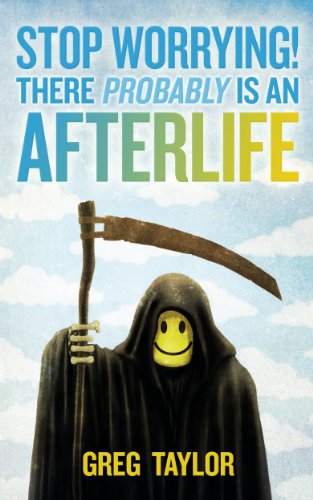 In an 1882 book that described a number of strange phenomena reported by the dying titled The Peak in Darien, author Frances Cobbe wrote of an incident “of a very striking character” that occurred in a family with very tight bonds. A dying lady suddenly began showing emotions of recognition and joy, before telling how, one after another, three of her brothers who had long been dead had appeared in the room. Then, strangely, a fourth brother appeared to her as dead, despite the fact that he was believed by those present to still be alive and well at his residence in India – the suggestion that he had passed away was enough to cause one person to run from the room in shock. Being the late 19th century, there was no instant way of checking on the brother’s health, but sometime later letters were received announcing his death in India at a time before his dying sister appeared to recognize a vision of him at her bedside.
In an 1882 book that described a number of strange phenomena reported by the dying titled The Peak in Darien, author Frances Cobbe wrote of an incident “of a very striking character” that occurred in a family with very tight bonds. A dying lady suddenly began showing emotions of recognition and joy, before telling how, one after another, three of her brothers who had long been dead had appeared in the room. Then, strangely, a fourth brother appeared to her as dead, despite the fact that he was believed by those present to still be alive and well at his residence in India – the suggestion that he had passed away was enough to cause one person to run from the room in shock. Being the late 19th century, there was no instant way of checking on the brother’s health, but sometime later letters were received announcing his death in India at a time before his dying sister appeared to recognize a vision of him at her bedside.
The title of Cobbe’s book has since become the unofficial name for accounts of this type, those where the dying have visions of deceased individuals who were thought to be alive at the time of the vision: Peak-in-Darien experiences. And like veridical NDEs, there are a surprisingly large number of them recorded in the literature. They have even seeped into popular culture: in recent times, the popular TV show Grey’s Anatomy brought such an experience into the public consciousness when the main character, Meredith Grey, had an NDE in which she had a vision of her mother, whom she thought was alive but had actually just passed away elsewhere in the hospital. The scene has a number of parallels with real life events.
For instance, in 1968 a female near-death experiencer reported having the classic OBE view of her hospital room from outside her physical body, before finding herself in ‘heaven’ with an angel and a familiar-looking young man. “Why, Tom, I didn’t know you were up here,” she said to the close family friend, with Tom replying to her that he had just arrived himself. Not long after returning to her body, and life, her husband received a phone call with the unfortunate news that their friend Tom had died in a car accident.
In another case, a 9-year-old boy in Pittsburgh suffering from meningitis woke up the next morning and said he’d been in heaven and saw his grandparents and uncle, as well as his older sister, saying “she told me I have to come back, but she’s going to stay there with grandma and granddad”. The boy’s father became upset with him, rebuking the lad before assuring him that his sister was alive and healthy at college in Vermont, as he had spoken with her the previous day. Concerned at the father’s state, the doctor told him to go home and get some rest, at which time he found that the college had been trying to call him all night long with the tragic news that his daughter had been killed in a car accident the night before.
………………..
Terminal Lucidity & Acquired Savant Syndromes
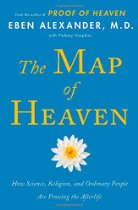 “To those still seduced by the simplistic notion that ‘the brain creates consciousness’ — those who might recoil when I mention that destruction of my neocortex greatly heightened my awareness — I would remind you of two commonly witnessed clinical phenomena that defy the simplistic brain-creates-mind model:
“To those still seduced by the simplistic notion that ‘the brain creates consciousness’ — those who might recoil when I mention that destruction of my neocortex greatly heightened my awareness — I would remind you of two commonly witnessed clinical phenomena that defy the simplistic brain-creates-mind model:
“1. TERMINAL LUCIDITY (in which demented elderly patients close to death often have astonishing cases of cognition, memory, insight, and reflection as they approach death, often at periods when they are fully aware of departed souls there to escort them to the spiritual realm);
“2. ACQUIRED SAVANT SYNDROMES (in which some form of brain damage — such as that seen in autism, head injury, or stroke — allows for some super-human mental capability such as advanced calculation abilities, intuition, musical abilities, or perfect memory of numbers, names, dates, or visual scenery).
“There is no explanation within our simplistic neuroscientific ideas of the brain to explain such extraordinary and counterintuitive observations.”
— Near-Death Experiencer Dr. Eben Alexander, The Map of Heaven, page 83-84
Related Links:
• People With Severe Mental Disability Become Normal Before Death
• Paradoxical Lucidity: A Potential Paradigm Shift For The Neurobiology And Treatment Of Severe Dementias
• Terminal Lucidity Reveals Mysteries About Consciousness
• Terminal Lucidity – The Case of Anna (Kathe) Ehmer
• The Death Of Anna Katharina Ehmer: A Case Study In Terminal Lucidity (pdf)
………………..
Miraculous Returns: Terminal Lucidity And The Work Of Alexander Batthyány
By Kenneth Ring, PhD
Excerpt:
I learned that, although this was not the immediate impetus for Alex’s TL (terminal lucidity) research, when he was a student he had his own TL encounter with a beloved grandmother. But to begin here with another illustrative case that Alex provides at the outset of his book, consider this story, which because of its length I had to abridge somewhat:
“My grandmother had suffered from Alzheimer’s dementia for several years. In the final stages of her illness, nothing much seemed to remain of the grandmother I knew and loved. At first, she could no longer recognise us. Eventually, she stopped speaking altogether and had to be fed, because she was no longer capable of eating unaided.
“On the day ‘the miracle’ happened, we reached the door, knocked, entered the room — and saw how my grandfather lovingly held my grandmother’s hand and, yes, spoke to her! At first, we just didn’t trust our eyes and ears. But then my grandmother looked at us one by one (all the five of us). Her large, beautiful eyes were perfectly clear. The haze of oblivion, of apathy, the ‘dead gaze’ had given way to an expression of limpid vitality. She who hadn’t recognised us for a year, who hadn’t even reacted when we visited her, addressed every one of us by name. On that day, however, my grandmother said in plain, clear German that she was glad to ‘be back’, and to see us.
“Then she looked lovingly at her husband, my grandfather, and asked us to take good care of him…She took his hand. I saw my grandfather’s face — thick tears were running down his cheeks. Between sobs, he barely managed to say: ‘I love you’. And she answered: ‘I love you!’ – and her gaze … I myself weep as I write this down, because I can see the clarity, urgency and love her eyes expressed that day as clearly as if I could see them now.
“This conversation lasted some 20 or 30 minutes. Then my grandmother lay back and soon fell asleep. When the phone rang the next morning, I knew before picking up, what the ward nurse was going to tell us. My grandmother had died peacefully in her sleep, at the age of 86. It was one of the most beautiful and wondrous and moving things I have witnessed to this day.”
There are many such stories in Alex’s book, and, collectively, they provide a very rich tapestry of these seemingly miraculous returns to full consciousness prior to death. Altogether, over a period of several years, Alex was able to receive some 214 cases from all over the world — from various countries in Europe, Asia, Africa, the U.S., etc. Respondents — hospice and palliative care nurses, other health care workers, family members –– were asked to complete a detailed questionnaire but also to provide written summaries of the TL episodes they had witnessed.
Alex found that TL is definitely a final death-related event with most patients dying shortly after having re-awakened, sometime just a few minutes later but mostly within a couple of days. Moreover, when asked to rate the degree of lucidity of these patients, the overwhelming majority of the 214 participants in the study, 77%, were judged to have spoken clearly and coherently “like normal,” and some of the rest were still definitely intelligible. An additional finding of interest is that about a quarter of the patients were observed to show “an increased overall vitality and zest for life,” manifesting “increased energy and elation.”
As for the length of these TL interactions, they varied from less than ten minutes (18%) to several days, with the plurality of them falling between ten and sixty minutes (42%).
Finally, many respondents said that witnessing a TL in a beloved relative or friend was like receiving a “special gift” (just as my daughter, Kathryn, testified was true for her and her husband) and that they “felt overwhelmingly grateful for being granted an unexpected opportunity to say goodbye.” Indeed, the consoling power of these experiences was easy to appreciate from the many such accounts Alex provides.
………………..
Terminal Lucidity in People with Mental Illness and Other Mental Disability: An Overview and Implications for Possible Explanatory Models
By Michael Nahm, PhD
Journal of Near-Death Studies, 28(2)
Winter 2009
Excerpt:
Hippocrates, Plutarch, Cicero, Galen, Avicenna, and other scholars of classical times noted that symptoms of mental disorders decrease as death approaches. All of them held the view that the soul remains basically intact when the brain is affected by physical malfunction and disturbance of the mind. Therefore, they believed that during and after death, the soul was freed from material constraints, regaining its full potential. Much later in Germany during the Age of Romanticism (1785–1840), many authors, dissatisfied with the development of the Age of Enlightenment (1720–1800), reemphasized the “night side of nature.” They contended that numerous phenomena including human consciousness could not be explained by quantitative mechanistic science. Thus, several treatises discussing the mysteries of dreaming, somnambulism and animal magnetism, clairvoyance, prophecies, or dying were published. The aim of these writers was usually to show that the soul is more than a by-product of brain chemistry, a notion gaining increasing importance among scientists at that time.
In the romantic context of nature philosophy and dying, the publications of physician and philosopher Gotthilf Heinrich Schubert (1780–1860) were specifically influential and also covered the topic of TL (terminal lucidity). Among others, Schubert (1808/1967) reported a case of a deaf-mute man and a case of a previously nonresponsive patient. In these and other cases in which I found original sources only in German, I provide an English translation:
“The deaf-mute man was educated in a special school for deaf-mute persons, but still never managed to speak understandably because of an ‘organic defect’ (not specified by Schubert). Yet, ‘in the elation of the last hours’, he was able to speak comprehensively for the first time in his life.”
“A sick old man had lied ‘debilitated and entirely speechless’ in his bed for 28 years. On the last day of his life, his awareness and ability to speak suddenly returned after he had a joyful dream in which the end of his suffering was announced.”
In regard to mental illness, Schubert (1814/1968) stated that it sometimes ceases before death like a bad dream the individual remembers. Even more, it seemed to Schubert that in some cases the mental illness of waking life enabled the hidden development of higher aspects of the soul on deeper levels, so that individuals with mental illness who recover before death can display an extraordinary change and ennoblement in their thinking and speech. He reported the case of a woman who died at the age of 47:
“Four weeks before her death, she finally recovered from her bad dream that had lasted for 20 years. But those who knew her before her madness hardly recognized her in her last state of transformation — so ennobled, enhanced, and elevated were all powers and sensations of her mental nature, so ennobled her articulation. She spoke with distinctness and inner brightness about things, which man learns only rarely to understand superficially in his ordinary state of being. Her story aroused furore. Literate and illiterate, educated and uneducated crowded at this dignified sickbed. All had to confess that even if she would have been taught by the most learned and enlightened men during the time of her illness, her mind could not have been more educated, her knowledge could not have been more substantial and higher than now, as she seemed to awaken from a long and deep confinement of all powers.”
………………..
Alzheimer Patient Rises From Deathbed, Regains Memory To Recite Poem, Then Passes Away – 278
Alex Tsakiris: In the papers that you’ve authored you have some really intriguing case studies and you’ve done quite a thorough job of scanning the literature, looking for these case studies, interviewing folks and getting new case information as well. The classic one, and one I really enjoyed, is someone who’s suffered from Alzheimer’s for a long period of time, and is more or less completely disabled. The woman I remember is a case in Iceland. She’s lying in bed and all of the sudden she sits up, and as clear as day looks at her son and recites this really beautiful poem, recites it perfectly, and then falls back into the this state of whatever that locked-up state severe Alzheimer’s sufferers have where she really can’t do anything. So tell us a little bit about that case or another case that just really befuddles the idea we have about how the brain works in these really hampered situations like Alzheimer’s.
Dr. Michael Nahm: Yes, I perfectly agree that’s one of the most intriguing cases and it relates to an Alzheimer’s [patient], a person with a long time Alzheimer’s disease history. And in fact we have collected quite a number of these cases. It seems that the Alzheimer’s cases are somehow very prominent in our case collection. And they are particularly interesting because Alzheimer’s disease destroys the brain to a very great extent so that in the end, in a terminal stage of this disease, people usually are non-responsive. They cannot do anything. They don’t talk. They just lie in their bed and this case was also in this category. It was actually related to me by Erlendur Haraldsson whom you may know from his many publications also on near-death related issues. So he related [this case] to me and I cannot tell you anymore about it but we have many other cases in which people suddenly seem to surprise their bystanders by addressing them personally while they didn’t know or recognize them for years before. They suddenly sat up or seemed to have access to their memory and talked about their lives; talked about their problems they had with let’s say the church, or the fear of death. And then they just leaned back and seemed to die very soon after this episode where everybody thinks, wow, he is recovering or she is recovering and is coming back to life. But quite the contrary, this person is very often in such cases about to die. And many nurses and caretakers have actually confirmed that they know this phenomenon. If a person who has been absent for a very long time suddenly becomes clear, they already get alerts and think, oh wow, this person is actually going to die.
Related Links:
• People With Severe Mental Disability Become Normal Before Death
• Paradoxical Lucidity: A Potential Paradigm Shift For The Neurobiology And Treatment Of Severe Dementias
• Terminal Lucidity Reveals Mysteries About Consciousness
• Terminal Lucidity – The Case of Anna (Kathe) Ehmer
• The Death Of Anna Katharina Ehmer: A Case Study In Terminal Lucidity (pdf)
………………..
Stuart Hameroff & Jeffrey Mishlove: The Brain At Death
………………..
The Brain: The Power of Hope
By Scott Haig M.D.
Time Magazine
January 29, 2007
Excerpt:
David’s head was literally stuffed with lung cancer. I was called in to take care of his hip and pelvic bones broken by the growing metastases. His seeming nonchalance about the pain and the surgery was clearly out of concern for his beautiful, young family — his wife Carol, a nurse, and his three kids, who were there every night. He couldn’t keep up the carefree charade over the next two weeks, though, as his speech slurred, then became incoherent. He stopped speaking, then moving.
I dreaded making rounds on a patient for whom there was no good news, no good plan. When his doctors rescanned his head, there was barely any brain left. The cerebral machine that talked and wondered, winked and sang, the machine that remembered jokes and birthdays and where the big fish hid on hot days, was nearly gone, replaced by lumps of haphazardly growing gray stuff. Gone with that machine seemed David as well. No expression, no response to anything we did to him. As far as I could tell, he was just not there.
It was particularly bad in the room that Friday when I made evening rounds. The family was there, sad, crying faces on all of them. I fussed with the hip a bit. His respirations had become agonal — the gulping kind of breathing movement that immediately precedes death. I knew Carol had seen this and that she knew what it meant. I said something inane and slid out the door fast, looking importantly at the papers in my hand, striving for the nice, empty corridor. But Carol came after me, needing to catch me away from the kids. Her eyes red-rimmed, she asked me where her husband was. I had noticed the cross around her neck. I said I wasn’t sure where he was, but I was pretty sure where he was going. She wanted to believe me, and I think she did.
Saturday morning the sun poured in as I checked the room. The bed was at chest height, made up and empty, with clean, fresh sheets over the vinyl mattress. As I turned to leave, I was blocked by a nurse, an older Irish lady with a doleful look on her face. She had taken care of David last night.
“He woke up, you know, doctor — just after you left — and said goodbye to them all. Like I’m talkin’ to you right here. Like a miracle. He talked to them and patted them and smiled for about five minutes. Then he went out again, and he passed in the hour.” My eyebrows went up.
Two weeks later I saw Carol in the lobby. It was busy and very public. But before her last “God bless you,” I couldn’t help asking, “Uh. Carol, did …?”
She knew my question. With a wide, knowing smile, she nodded and said, “Oh, yes, he sure did.” And I believed her.
But it wasn’t David’s brain that woke him up to say goodbye that Friday. His brain had already been destroyed. Tumor metastases don’t simply occupy space and press on things, leaving a whole brain. The metastases actually replace tissue. Where that gray stuff grows, the brain is just not there.
What woke my patient that Friday was simply his mind, forcing its way through a broken brain, a father’s final act to comfort his family…
………………..
Science and the Soul
By Michael Egnor M.D., neurosurgeon and professor of neurological surgery and pediatrics at Stony Brook University
Excerpt:
I watched the CAT scan images appear on the screen, one by one. The baby’s head was mostly empty. There were only thin slivers of brain — a bit of brain tissue at the base of the skull, and a thin rim around the edges. The rest was water.
Her parents had feared this. We had seen it on the prenatal ultrasound; the CAT scan, hours after birth, was much more accurate. Katie looked like a normal newborn, but she had little chance at a normal life. She had a fraternal-twin sister in the incubator next to her. But Katie only had a third of the brain that her sister had. I explained all of this to her family, trying to keep alive a flicker of hope for their daughter.
I cared for Katie as she grew up. At every stage of Katie’s life so far, she has excelled. She sat and talked and walked earlier than her sister. She’s made the honor roll. She will soon graduate high school.
I’ve had other patients whose brains fell far short of their minds. Maria had only two-thirds of a brain. She needed a couple of operations to drain fluid, but she thrives. She just finished her master’s degree in English literature, and is a published musician. Jesse was born with a head shaped like a football and half-full of water — doctors told his mother to let him die at birth. She disobeyed. He is a normal happy middle-schooler, loves sports, and wears his hair long.
Some people with deficient brains are profoundly handicapped. But not all are. I’ve treated and cared for scores of kids who grow up with brains that are deficient but minds that thrive. How is this possible?
…the classical understanding of human nature is that we are free beings not subject to determinism. This understanding is the indispensable basis for human liberty and dignity. It is indispensable, too, for simply making sense of the world around us: among other things, for making sense of Katie.
I see her in my office each year. She is thriving: headstrong and bright. Her mother is exasperated, and, after seventeen years, still surprised. So am I.
There is much about the brain and the mind that I don’t understand. But neuroscience tells a consistent story. There is a part of Katie’s mind that is not her brain. She is more than that. She can reason and she can choose. There is a part of her that is immaterial — the part that Sperry couldn’t split, that Penfield couldn’t reach, and that Libet couldn’t find with his electrodes. There is a part of Katie that didn’t show up on those CAT scans when she was born.
Katie, like you and me, has a soul.
………………..
Dr. Laurin Bellg, A Critical Care Physician, Describes Near-Death Experiences In The ICU
Near Death In The ICU
By Laurin Bellg, MD
Book Description:
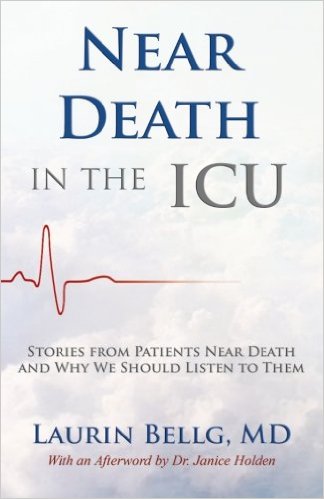 A phenomenal collection of medical patient accounts of encounters with the mysterious during severe illness and life-threatening injury from the voice of the physician who took care of them. Both touching and thought-provoking, this book invites you to reconsider what happens when we die, and in doing so, challenges you to ponder that perhaps we are much more than our earth-bound physical bodies.
A phenomenal collection of medical patient accounts of encounters with the mysterious during severe illness and life-threatening injury from the voice of the physician who took care of them. Both touching and thought-provoking, this book invites you to reconsider what happens when we die, and in doing so, challenges you to ponder that perhaps we are much more than our earth-bound physical bodies.
Near-death experiences are often profoundly meaningful, yet when they are reported, they are frequently met with skepticism and dismissal by medical caregivers and family members. But do we have to fully understand these events to honor the transformative role they often play in the lives of those who experience them?
For nearly twenty years, Dr. Laurin Bellg has been present at the bedside of critically ill and dying patients. As she has worked to create an accepting and supportive relationship with them, her patients have shared with her the mysterious experiences they sometimes have during moments of crisis of apparently seeing beyond our physical world. In telling their engaging, powerful and sometimes humorous stories, Dr. Bellg invites the reader to consider that bearing witness to a patient’s near-death experience is a respectful and meaningful part of medical care, a way for families to support their loved ones, and an important part of the patient’s healing.
………………..
Mindsight: Near-Death and Out-of-Body Experiences in the Blind
By Kenneth Ring
Book Description:
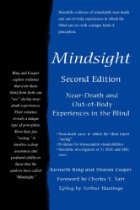 This book investigates the astonishing claim that blind persons, including those blind from birth, can actually “see” during near-death or out-of-body episodes. The authors present their findings in scrupulous detail, investigating case histories of blind persons who have actually reported visual experiences under these conditions.There is fascinating evidence that the blind do “see” in these moments, but it is not sight as we think of it. Ring and Cooper suggest a kind of “transcendental awareness” they refer to as Mindsight. It involves seeing in detail, sometimes from all angles at once, with everything in focus, and a sense of “knowing” the subject, not just visually, but with multisensory knowledge.Human beings may be more talented than we think, gifted with amazing abilities of perception. This book is an opportunity to assess the evidence for yourself.
This book investigates the astonishing claim that blind persons, including those blind from birth, can actually “see” during near-death or out-of-body episodes. The authors present their findings in scrupulous detail, investigating case histories of blind persons who have actually reported visual experiences under these conditions.There is fascinating evidence that the blind do “see” in these moments, but it is not sight as we think of it. Ring and Cooper suggest a kind of “transcendental awareness” they refer to as Mindsight. It involves seeing in detail, sometimes from all angles at once, with everything in focus, and a sense of “knowing” the subject, not just visually, but with multisensory knowledge.Human beings may be more talented than we think, gifted with amazing abilities of perception. This book is an opportunity to assess the evidence for yourself.
………………..
Woman, Blind From Birth, Sees During NDE
Vicki Noratuk was born blind. In this Coast-To-Coast interview Vicki describes what it was like to experience sight for the first time. Then she goes on to describe encounters with Jesus, moving through hellish and heavenly realms, and being told she couldn’t stay on the other side because she was to become a mother and teach unconditional love and forgiveness. Jesus, according to Vicki, also told her to tell others about him and her experience: “let them know of this day and tell them that I AM”. To learn more about Vicki Noratuk, go here.
A Blind Woman Can See During Her Near-Death Experience (Coast To Coast AM Interview)
………………..
A Blind Woman Can See During Her Near-Death Experience (Excerpt From BBC Documentary)
The video clip above is excerpted from The Day I Died, a 2002 BBC documentary on near-death experiences.
………………..
Excerpts from Dr. Penny Sartori’s new book, “The Wisdom of Near-Death Experiences”
Miraculous Healing
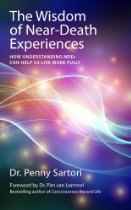 “This near-death experience had two significant effects on his life. First, Tom says, it completely removed any fear of dying.
“This near-death experience had two significant effects on his life. First, Tom says, it completely removed any fear of dying.
“Even more extraordinary is what happened to his right hand, which had been frozen since birth into a claw-like position.
“(This had been noted on his hospital admission form, and his sister has since signed a statement confirming it.)
“Yet, in front of me, soon after his near-death experience, Tom opened and flexed that same hand. This should not have been physiologically possible, as the tendons had permanently contracted. What had caused this sudden, seemingly spontaneous healing? Even now, science has no answers.
“But when you study near-death experiences, as I have for the past couple of decades, you grow used to phenomena that defy all rational explanation…”
– From the first article in the Daily Mail series
………………..
The Mystery of Perception During Near Death Experiences – Pim van Lommel
Consciousness Beyond Life: The Science of the Near-Death Experience
By Pim van Lommel
Book Description:
 As a cardiologist, Pim van Lommel was struck by the number of his patients who claimed to have near-death experiences as a result of their heart attacks. As a scientist, this was difficult for him to accept: Wouldn’t it be scientifically irresponsible of him to ignore the evidence of these stories? Faced with this dilemma, van Lommel decided to design a research study to investigate the phenomenon under the controlled environment of a cluster of hospitals with a medically trained staff.
As a cardiologist, Pim van Lommel was struck by the number of his patients who claimed to have near-death experiences as a result of their heart attacks. As a scientist, this was difficult for him to accept: Wouldn’t it be scientifically irresponsible of him to ignore the evidence of these stories? Faced with this dilemma, van Lommel decided to design a research study to investigate the phenomenon under the controlled environment of a cluster of hospitals with a medically trained staff.
For more than twenty years van Lommel systematically studied such near-death experiences in a wide variety of hospital patients who survived a cardiac arrest. In 2001, he and his fellow researchers published his study on near-death experiences in the renowned medical journal The Lancet. The article caused an international sensation as it was the first scientifically rigorous study of this phenomenon. Now available for the first time in English, van Lommel offers an in-depth presentation of his results and theories in this book that has already sold over 125,000 copies in Europe.
Van Lommel provides scientific evidence that the near-death phenomenon is an authentic experience that cannot be attributed to imagination, psychosis, or oxygen deprivation. He further reveals that after such a profound experience, most patients’ personalities undergo a permanent change. In van Lommel’s opinion, the current views on the relationship between the brain and consciousness held by most physicians, philosophers, and psychologists are too narrow for a proper understanding of the phenomenon. In Consciousness Beyond Life, van Lommel shows that our consciousness does not always coincide with brain functions and that, remarkably and significantly, consciousness can even be experienced separate from the body.
………………..
Dr. Eben Alexander’s Remarkable NDE
Concerning the near-death experience of Dr. Eben Alexander, Dr. Raymond Moody says “I have never heard one that comes near this. This is the most amazing story that I personally have heard in 50 years now of interest in this.” The October 15, 2012 edition of Newsweek ran a cover story on Dr. Eben Alexander’s near-death experience. Go here to read the Newsweek piece. To find out more about Dr. Alexander and his extraordinary near-death experience, go here. To order a copy of Dr. Alexander’s book, go here. To view our coverage of Dr. Alexander, including the controversial expose’ that Esquire published, go here. To learn about a comprehensive review by independent physicians of Alexander’s medical records that appears in the peer-reviewed Journal of Nervous and Mental Disease, go here.
………………..
Doctor & Near-Death Experiencer Eben Alexander: A Changed View Of Reality
………………..
Alex Tsakiris Interviews Researcher/Author Chris Carter On Skeptiko
Science and the Near-Death Experience: How Consciousness Survives Death
By Chris Carter
Book Description
 The scientific evidence for life after death.
The scientific evidence for life after death.
• Explains why near-death experiences (NDEs) offer evidence of an afterlife and discredits the psychological and physiological explanations for them
• Challenges materialist arguments against consciousness surviving death
• Examines ancient and modern accounts of NDEs from around the world, including China, India, and many from tribal societies such as the Native American and the Maori
Predating all organized religion, the belief in an afterlife is fundamental to the human experience and dates back at least to the Neanderthals. By the mid-19th century, however, spurred by the progress of science, many people began to question the existence of an afterlife, and the doctrine of materialism — which believes that consciousness is a creation of the brain — began to spread. Now, using scientific evidence, Chris Carter challenges materialist arguments against consciousness surviving death and shows how near-death experiences (NDEs) may truly provide a glimpse of an awaiting afterlife. Using evidence from scientific studies, quantum mechanics, and consciousness research, Carter reveals how consciousness does not depend on the brain and may, in fact, survive the death of our bodies. Examining ancient and modern accounts of NDEs from around the world, including China, India, and tribal societies such as the Native American and the Maori, he explains how NDEs provide evidence of consciousness surviving the death of our bodies. He looks at the many psychological and physiological explanations for NDEs raised by skeptics — such as stress, birth memories, or oxygen starvation — and clearly shows why each of them fails to truly explain the NDE. Exploring the similarities between NDEs and visions experienced during actual death and the intersection of physics and consciousness, Carter uncovers the truth about mind, matter, and life after death.
See also:
• Science and the Afterlife Experience (book)
• Science and the Near-Death Experience (book)
• Science and Psychic Phenomena (book)
• Why Materialist Science Cannot Explain Near-Death Experiences
• Science & The NDE: Chris Carter On Skeptiko
• Book Review: Science And The Near-Death Experience
• New Book: ‘Brain Wars’ on NDEs
………………..
Erasing Death: The Science That Is Rewriting the Boundaries Between Life and Death
By Sam Parnia, Josh Young
Book Description
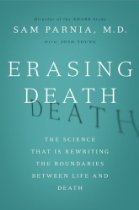 Erasing Death: The Science That Is Rewriting the Boundaries Between Life and Death sheds new light on the ultimate mystery: What happens to human consciousness during and after death?
Erasing Death: The Science That Is Rewriting the Boundaries Between Life and Death sheds new light on the ultimate mystery: What happens to human consciousness during and after death?
No one comes face-to-face with death more often than Dr. Sam Parnia, founder of the AWARE Study (AWAreness during REsuscitation), and one of the world’s leading experts on the scientific study of death, the human mind-brain relationship, and near-death experiences.
Based on cutting-edge research in the science of death, Erasing Death is evidence that we are making previously unthinkable technological progress in our battle against death, and still more radical victories await us. With Dr. Parnia at the forefront, we may be on the verge of inadvertently discovering a new universal science of consciousness that reveals the nature of mind and the so-called human soul.
………………..
Professor Charles Tart: Does Mind Survive Death?
………………..
Robert & Suzanne Mays: The Importance Of Veridical Perceptions In Near-Death Experiences
………………..
Near-Death Experiences of Groups of People
A more interesting and rare type of NDE is called the “group near-death experience”. This is a phenomenon where a whole group of people have an NDE at the same time and location. They see each other outside of their bodies and have a shared or similar experience. P.M.H. Atwater gives a definition of a “Group NDE”:
“These are rare, but they do occur. With this kind, a whole group of people simultaneously seems to experience the same or similar episode. What makes these so spectacular and challenging is that all or most of the experiencers see each other actually leave their bodies as it happens, then dialogue with each other and share messages and observations while still experiencing the near-death state. Their separate reports afterward either match or nearly so. Reports like these emerge most often from events of a harrowing nature that involve a lot of people.
“Shared and group experiences imply that no matter how sure we are that near-death states mean this or that, and are the result of whatever, no single idea, theory, or pat answer can explain them. Even clues from the powerful patterning that researchers like myself have identified, fail to explain all aspects of the phenomenon.”
The following are excellent examples of group near-death experiences:
1. A Group of Firefighters Near-Death Experience
2. May Eulitt’s and Her Two Companions Group NDE
3. Steven Ridenhour and His Girlfriend’s Group NDE
4. Four Hospital Patients Group Near-Death Experience
………………..
The Extraordinary Near-Death Experience Of Pam Reynolds

Pam Reynolds Lowery from Atlanta, Georgia was an American singer-songwriter. Cardiologist Dr. Michael Sabom wrote a book entitled Light and Death that includes a detailed medical and scientific analysis of Reynolds’s NDE. In 1991, at the age of 35, Reynolds underwent a rare operation to remove a giant basilar artery aneurysm in her brain that threatened her life. The size and location of the aneurysm, however, precluded its safe removal using the standard neuro-surgical techniques. She was referred to a neurosurgeon, Dr. Robert F. Spetzler, of the Barrow Neurological Institute in Phoenix, Arizona, who had pioneered a daring surgical procedure known as deep hypothermic cardiac arrest. It allowed Pam’s aneurysm to be excised with a reasonable chance of success. This operation, nicknamed “standstill” by the doctors who perform it, required that Pam’s body temperature be lowered to 60 degrees, her heartbeat and breathing stopped, her brain waves flattened, and the blood drained from her head. In everyday terms, she was put to death. After removing the aneurysm, she was restored to life.
During the time that Pam was in standstill, she experienced an NDE. Her remarkably detailed veridical (i.e., verified) out-of-body observations during her surgery were later verified to be true. Her case is considered to be one of the strongest cases of veridical evidence in NDE research because of her ability to describe the unique surgical instruments, the surgical procedures used on her, and her ability to describe in detail these events while she was clinically brain dead. Pam Reynolds Lowery ultimately died from heart failure, on Saturday May 22, 2010, at the age 53.
This video is an excerpt from the 2002 BBC documentary The Day I Died.
………………..
National Geographic Documentary On Near-Death Experiences: The Moment Of Death
The Moment of Death is a 2008 National Geographic Documentary on near-death experiences. It features author Mary Roach, doctor Sam Parnia, doctor James Whinnery, researcher David Hovda, near-death experiencer Al Sullivan, doctor Hiroyoshi Takata, doctor Anthony F. Lasala, and another unidentified near-death experiencer. It discusses the NDE-like effects that some pilots experience when exposed to extreme G-Force and includes Al Sullivan’s famous out-of-body experience. Sullivan describes watching his doctor make strange flapping motions while he, Sullivan, was unconscious, behind a curtain, with his eyes taped shut. Sullivan’s doctor explains his odd behavior, but says he cannot explain how Sullivan was able to see him during the operation.
………………..
Kimberly Clark Sharp & The Famous Blue Sneaker
………………..
The Other Shoe Drops: Commentary on “Does Paranormal Perception Occur in Near-Death Experiences?” (pdf)
………………..
Kimberly Clark Sharp Finds A Blue Tennis Shoe & Proves Near-Death Experiences Are Real
………………..
Deceased Mother Tells Resuscitated Daughter Where To Find Important Documents
Father Peter McGrath tells this story:
“I can remember one occasion with a little girl. Her parents had been drowned and her brother had been drowned. It’s an extraordinary story… When she was resuscitated, she told the nurses and told us that she went into a garden while she was unconscious. She was greeted and looked after by a very kind man who took her to her mother and father, who took her to her little brother who she was worried about. He introduced her to people who were her grandparents whom she had never seen. And the mother told her where to find certain articles and papers when she returned home so she would be OK. She then came back home and found the articles. It appears that not only had she never met her grandparents, but she knew facts about her grandparents that there is no way she could have known. She was most serene, with great hope, at the funeral… It’s that sort of experiences that change people’s lives and make them happier and more secure even to the point where they no longer fear death.”
This video clip is taken from Early Near-Death Experience Accounts.
………………..
Thomas Fleischmann: From Life To Death, Beyond And Back
This talk was given at a local TEDx event, produced independently of the TED Conferences. Dr. Fleischmann sees dead people. In fact, he has seen over 2,000 humans die but brought back to life several hundreds of them. In his talk, he shares the near-death experiences (“Nahtoderfahrungen”) he witnessed as an emergency physician and tells us about one of the most drilling questions of the human kind: how it is to die.
Thomas Fleischmann has been an emergency physician since 1982. Since 2005 he has worked as the director of emergency medical units in Germany and Switzerland. As well as being a fellow of the British College of Emergency Medicine and the European Society for Emergency Medicine, Dr. Fleischmann holds a Master of Health Business Administration. In addition to frequently holding speeches about emergency medicine topics, he is also the editor of two textbooks on emergency medicine and has written many academic papers on the topic.
………………..
Thetus Tenney Describes Traveling Outside Her Body During A Near-Death Experience
………………..
Former Atheist & Materialist, Dr. Bettina Peyton, Shares Her Near-Death Experience
………………..
People Who Were Atheists Before An NDE Caused Them To Abandon Materialistic Worldviews
• Howard Storm
• Bettina Peyton
• Louisa Peck
• Nancy Rynes
• Tom Sawyer
• Barbara Harris Whitfield
• George Rodonaia
• Arthur Yensen
• Louisa Peck
• Beverly Brodsky
• Mellen-Thomas Benedict
• Ian McCormack
• Roger Ebert
• Yolaine Stout
• Dannion Brinkley
• Julie Aubier
• Ned Dougherty
• Louis Famoso
• Don Brubaker
• Joni Maggi
• Kerry Kirk
• Duane S
• Janet
• Joel
• Atheist NDE Accounts Listed on the NDERF Website
• Atheist NDE Accounts Listed on the IANDS Website
• Experiences of ‘Ultimate Reality’ or ‘God’ Confer Lasting Benefits to Mental Health
………………..
Excerpted from the book The Purpose of Life as Revealed by Near-Death Experiences from Around the World
Chapter 54 – Tell Her About The Light
By Louisa Peck
I remembered my near-death experience perfectly, including the bliss of love from The Light I encountered. I missed It terribly. At my core, I knew The Light was real — but I didn’t want to admit it. At the time, even after my NDE, I was an adamant atheist. Anybody who believed in God, or talked about God, just pissed me off. So I discounted my experience. “Get this,” I told one friend, “I had this crazy drug trip! It seems like I’m going into the sun!”
In other words, I was really good at denial!
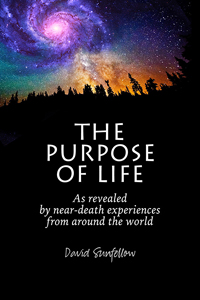 I was raised in a family that dismissed all spirituality as religion — and religion was an archaic way of explaining how the world worked. Now that science had unraveled evolution and biology, it was time to discard primitive beliefs in God, angels, and any related silliness like heaven. My understanding of the universe was simple: it was godless, mechanical, and utterly pointless.
I was raised in a family that dismissed all spirituality as religion — and religion was an archaic way of explaining how the world worked. Now that science had unraveled evolution and biology, it was time to discard primitive beliefs in God, angels, and any related silliness like heaven. My understanding of the universe was simple: it was godless, mechanical, and utterly pointless.
The home I grew up in was also an alcoholic home. In order to survive, I learned to compartmentalize facts I didn’t want to integrate into my life. I also became an alcoholic myself.
After my near-death experience, I stood at a crossroads. Either A) everything I had ever believed about a godless universe was wrong or B) I’d had a drug trip. I chose B. That way, I could continue the life I knew of drinking and chasing popularity.
So I locked my NDE away in a vault. I would have left it there except paranormal aftereffects started to happen to me. The greatest one was around my sister’s death.
She was dying from metastasized breast cancer. My family and I had been told that she had two weeks to live. During the night, as I tried to sleep in a chair, I sensed light — The Light — seeping in the window, traveling to my sister, and swirling in a slow vortex above her body. Each time I opened my eyes, I saw nothing. When I closed my eyes and tried to dismiss the feeling, it grew stronger.
Then a voice, which was connected to the sun I visited in my near-death experience, spoke to me. “She’s afraid,” It said. “Tell her about The Light!”
“What a silly thought!” I responded. “She’s not going to die now. She’s gonna live two more weeks!”
“Tell her,” the voice urged. Still hesitating, I was shown how my sister’s fear and hurt were blocking her from crossing over. I was also shown that I held the key to set her free.
“Go to her!” the voice urged. “Do it NOW!”
At last, I went. I knelt beside her, took her hand, and spoke into her ear. “God loves you so much,” I said. Remembering her love for Jesus, I added, “Jesus loves you so much. He’s so proud of all you’ve done on Earth. You’ve been a wonderful pianist, a scholar, and a loving mother. He’s so happy with everything you’ve done. But your body can’t work anymore. It’s time for you to come home. Jesus will take you with him. You’ll be so warm and the light will fill you with the most amazing love!”
The memory of my near-death experience filled my voice.
“I love you. We all love you.”
Twenty minutes later, my sister suffered a violent hemorrhage that sent my brother and I running for help. In a panic, I forgot all about The Light, all about the voice. “Help us! Help us!” Finally, a young doctor came and checked my sister. She briskly informed us, “Her heart is still beating, but it’ll stop when it runs out of oxygen.” Rage filled me. I wanted to scream, “How can you just let her die?!”
Then, all at once, I could feel my sister’s spirit. Her energy was hovering in the room. In life, her love had always felt a certain way, it had a certain flavor. I felt it strongly now. It replaced my anger with joy.
She told me, “I’m fine. I’m so wonderful!” Rejoicing, she filled me, my brother, even the doctor and nurse, with her love. She also filled me with The Light again, which reawakened in me memories of Its brilliance, so much so that I struggled to conceal my joy.
After a series of paranormal events like the one I had with my sister, the last pillar of my atheism toppled. It took 21 years for me to fully align with what I experienced during my near-death experience. In the end, two organizations saved the day: The International Association for Near-Death Studies (IANDS) and Alcoholics Anonymous (AA). These two organizations helped me reach the point where I could tell God that I loved It and promised I would never turn away again — and I haven’t.
My mission, I have come to understand, is to overcome the egoic challenges that all humans face. With humor and humility, we’re here to turn fear, anger, selfish greed and gloating pride into love and compassion for all life.
………………..
Other Links & Resources:
• Miraculous NDE Healings
• How To Deal With Skeptics & Atheists
• Scientific Evidence for Survival of Consciousness After Death (near-death.com)
• People Have Near-Death Experiences While Brain Dead (near-death.com)
• Key Facts about Near-Death Experiences – Correlations and Explanations (IANDS)
• Verified OBE (Out-Of-Body) Experiences
………………..
Recent Off-Site Articles:
• Top Five Phenomena That Offer Evidence For An Afterlife
• The Violent Attack That Turned A Man Into A Maths Genius (04/11/19)
• Smarty Plants (02/13/18)
• Mental Clarity During Near-Death Experiences Suggests Mind Exists Apart From Brain: Study (08/06/16)
• In Near-Death Experiences, Blind People See for First Time (07/30/16)
• Psychedelics Actually Reduce Activity In The Brain (04/18/16)
• Your Brain Might Be A Radio (2014)
• Memory Study: Near-Death Experiences More Vivid Than Real Life (04/05/13)
………………..
Stephen C. Meyer – Buddha At The Gas Pump Interview
………………..
………………..
………………..
………………..

………………..
………………..
………………..
………………..


